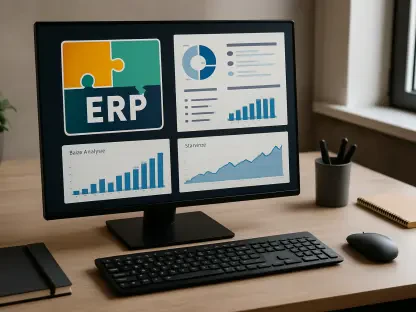Airtable has emerged as a versatile platform that combines elements of a relational database, collaboration app, and project management solution. This comprehensive review explores its functionalities, benefits, and drawbacks, assessing its suitability for agile project management and various business needs.
Overview of Airtable
Airtable is a multifaceted tool that transcends standard project management software. It offers a unique blend of features that cater to diverse business operations, from managing work and tracking inventories to planning events. Recently, Airtable introduced “Product Central,” a solution aimed at aligning teams around data and product roadmaps, further solidifying its position as an end-to-end solution for digital operations.
Key Features and Functionalities
Versatility and Customization
One of Airtable’s standout features is its high degree of adaptability and customization. It is suitable for managing marketing campaigns, building products, and handling day-to-day work. Users can tailor the platform to fit their specific business needs, making it a flexible tool for various applications.
Airtable’s customization options allow users to create unique workflows and processes. This flexibility is particularly beneficial for agile project management, where adaptability and responsiveness are crucial. The ability to create custom views, fields, and records allows teams to organize their data in ways that best suit their workflows. Whether it’s setting up a sales pipeline, tracking project milestones, or managing client relationships, Airtable’s modular design makes it an invaluable tool for diverse business needs.
Views
Airtable offers a myriad of views to organize data and manage projects efficiently. These include list views, timeline views, Kanban boards, Gantt views, calendars, grids, galleries, and form views. This range of options allows users to visualize their tasks and data in various formats suited to their preferences and requirements.
The ability to switch between different views helps teams stay organized and ensures that everyone can work in the way that suits them best. This feature is especially useful for agile teams that need to adapt quickly to changing project requirements. By providing multiple perspectives on the same data, Airtable ensures that team members can access the information they need in the format that works best for them, whether they are managing deadlines or tracking progress.
Automation, Integrations, and Extensions
Built-in automation capabilities enable users to create workflows without needing coding knowledge. Airtable integrates seamlessly with various tools, such as Google Workspace, Slack, and Zapier, allowing for customized connections with webhooks. The platform also offers a vast array of extensions that bring additional functionality tailored by Airtable and third-party companies.
These automation and integration features streamline processes and reduce manual work, making it easier for teams to focus on high-value tasks. For agile project management, this means more efficient sprints and faster delivery times. Automation can handle repetitive tasks, such as sending reminders, updating records, and generating reports, allowing team members to concentrate on more strategic activities.
Connected Databases and App Building
Users can draw data from numerous platforms into Airtable, enabling cohesive app-building within the system. The platform’s Cobuilder tool facilitates intuitive app creation, leveraging templates for common uses like content calendars and product roadmaps. The Interface Designer allows for the creation of highly customizable interfaces without requiring coding skills.
This capability to build custom apps and interfaces within Airtable enhances its utility for agile teams. It allows for the creation of tailored solutions that meet specific project needs, improving overall efficiency and effectiveness. Teams can build specialized apps that integrate seamlessly with their existing workflows, helping them achieve their project goals more effectively.
Governance and Team Management
Airtable provides granular control over roles and permissions within projects. Team members can be designated as “owner/creator,” “editor,” or “read-only,” with advanced provisioning options available at higher subscription levels. The Enterprise Hub offers enhanced security and compliance features for organizations that require stringent control over their data and operations.
Effective team management and governance are critical for agile project management. Airtable’s robust role and permission settings ensure that the right people have access to the right information, facilitating better collaboration and decision-making. Advanced governance options, such as user provisioning and data security controls, ensure that organizations can maintain compliance with industry standards and regulations.
Reporting, Analytics, and Artificial Intelligence
Airtable’s reporting features are highly customizable, with the platform allowing users to generate charts, graphs, and dashboards as needed. Advanced users with coding expertise can create bespoke reporting systems via scripting tools and APIs. Airtable’s AI suite assists in building apps, summarizing content, and deriving insights from loaded data. Despite the additional cost, the AI tools provide significant value by automating many data management tasks.
For agile teams, having access to detailed and customizable reports is essential for tracking progress and making data-driven decisions. Airtable’s AI capabilities further enhance this by providing intelligent insights and automating routine tasks. Data analytics and AI tools allow teams to identify trends, forecast outcomes, and optimize their project workflows based on real-time information.
Pros and Cons
Pros
Airtable shines in its app-building and development tools, integrated AI capabilities, and top-notch automation features. The platform offers a wide array of views that cater to various project management needs, along with built-in reporting, governance, and security features. The generous free plan supports up to 5 editors with key features included, making it accessible for small teams.
These strengths make Airtable a powerful tool for agile project management, providing the flexibility and functionality needed to manage complex projects effectively. The ability to rapidly configure and adapt the platform to changing requirements is particularly advantageous for teams working in dynamic environments.
Cons
However, advanced features come with a steep learning curve, and the premium plans can be quite expensive compared to other project management tools. Certain features are missing from the mobile version, and advanced support options incur extra costs.
These drawbacks may be a consideration for teams with limited budgets or those seeking a more straightforward solution. The learning curve, in particular, may require additional training and onboarding time. Some users might find the initial complexity daunting, and transitioning to Airtable from a simpler tool could take significant effort.
Pricing Plans
Free Plan
The free plan supports up to 5 editors with unlimited bases, 1GB of attachments per base. This plan includes Airtable’s interface designer, making it an excellent starting point for small teams to explore the platform’s capabilities. However, the free plan has its limitations, and as teams grow and their needs become more complex, there may be a necessity to upgrade to a paid plan.
Team Plan
At $20 per seat per month, the Team Plan enhances the free plan with 50,000 records per base, 25,000 automation runs, 20GB of attachments per base, timeline, and Gantt views, extensions, and expanded formatting options. This plan is suitable for growing teams who need more extensive features and higher storage capacities, offering a balance between functionality and affordability.
Business Plan
The Business Plan costs $45 per seat per month and adds more robust options like 125,000 records per base, 100GB of attachments per base, 100,000 automation runs, premium sync integrations, and admin panels. This plan is designed for larger teams or organizations that require advanced capabilities and greater scalability, providing enhanced control and support.
Enterprise Scale
With custom pricing, the Enterprise Scale plan offers comprehensive features such as 500,000 records per base, 1,000GB of attachments per base, 500,000 automation runs, app libraries, enterprise hubs, API access, and advanced integration management. This plan caters to the needs of large organizations with complex requirements, ensuring maximum flexibility and extensive support.
Usability and Support
Despite the initial learning curve, Airtable becomes straightforward to use once users invest some time. Communications within teams are facilitated via comments, task assignments, and no-code tools for designing interfaces and automating workflows. However, the mobile app does not mirror all the capabilities of the web version, which can be limiting.
Support varies by subscription tier, with free users having access solely to the help center, community forums, and in-app tooltips. Paid users at the business level and above enjoy additional email support and access to professional services, albeit at an extra cost. This tiered support model ensures that users have access to the resources they need, but it may require investment in higher plans for more comprehensive assistance.
Consolidated Analysis and Consensus Viewpoint
Airtable stands out as a dynamic and multifaceted digital operations platform. It is particularly valued for its customization, vast array of views, automation capabilities, and the integration of AI tools. The platform supports a range of business operations, from marketing to app development, thanks to its flexible and adaptable framework.
However, users should be prepared for a learning curve with advanced features, and the cost of premium plans and add-ons can be a significant consideration. Airtable is best suited for mid-sized companies and small businesses aiming to manage and utilize their data more effectively. It offers a powerful combination of relational databases, project and task management, and app building, making it an all-in-one tool for digital operations.
Final Verdict
Airtable has become a standout platform by integrating features of a relational database, a collaboration tool, and a project management solution. This extensive review delves into its functionalities, advantages, and disadvantages, evaluating its effectiveness for agile project management and various business requirements.
Airtable’s unique blend of relational database capabilities with an intuitive, flexible interface allows users to tailor databases to their specific needs. Its collaboration features enable team members to work seamlessly together, sharing information and updates in real time. Additionally, its project management aspects help streamline task tracking, deadline management, and workflow organization.
A significant advantage of Airtable is its adaptability across different industries and use cases, such as marketing campaigns, product launches, event planning, and inventory management. However, while Airtable offers many benefits, it also has drawbacks. Some users may find the learning curve steep, especially if they’re unfamiliar with database concepts. Additionally, the free plan’s limitations might not suffice for larger teams or complex projects.
Overall, Airtable excels in offering a versatile, user-friendly tool that caters to a wide range of business needs. Its combination of database functionality, collaboration features, and project management tools make it a valuable asset for teams aiming to improve efficiency and productivity in agile project management and beyond.









